Since 1984, the Church has commemorated the Synaxis of Belarusian Saints on the third Sunday after the Pentecost. Initially, the Synaxis included only 14 saints who were born in Belarus or have lived and served here. Since then, it has increased to 79 saints.
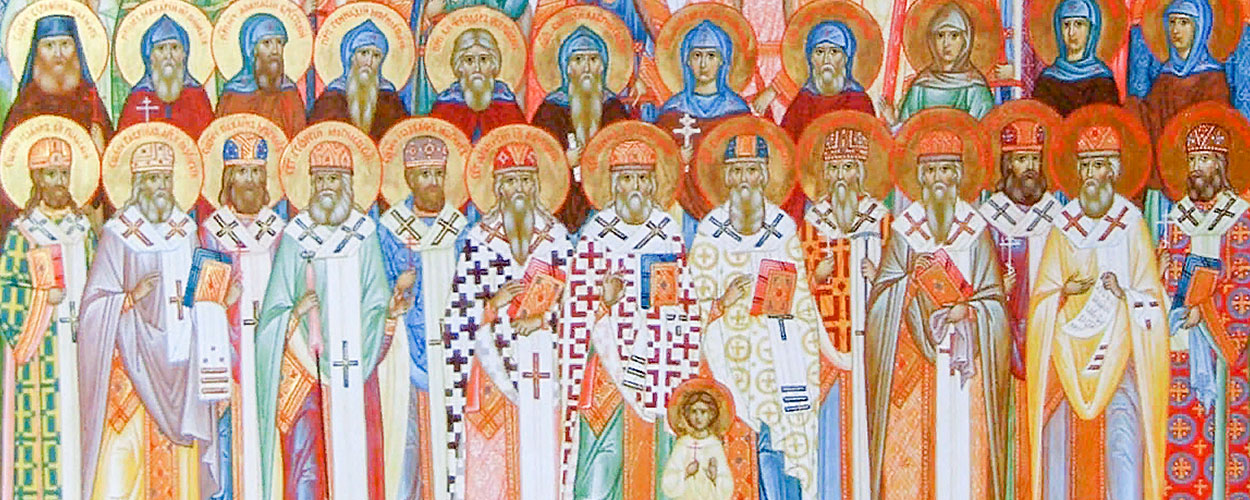
The feast reminds us that holiness is not distant, abstract or beyond our reach. Belarusian saints lived in this land, walked the same earth, and breathed the same air. With their lives, they set examples of genuine Christian service and asceticism.
In Belarus, the tradition of holiness is as old as the Orthodox faith. It goes back to the times when the Holy Apostle Andrew was preaching to our distant ancestors. For centuries, the saints have shown us how to grow in our faith and devotion to Christ. Among them are strict ascetics and martyrs. They were educators, statesmen and clerics. They differed in their background, social standing, education and many other things, but they were united in their love and service to God.
As he was baptizing his people in the Dnieper in 988, Saint Vladimir, Prince of Kiev prayed: "Oh God, grant Your new people to know You as the true God, even as the other Christian nations have known You." Following in the footsteps of Saint Vladimir, the great Christian illuminators of Belarus dedicated their lives to bringing people the light of Christ's love, preaching who did not know Him, opposing ignorance and disbelief and helping those who fell away from the Church to return to its fold.
Saint Menas, bishop of Polotsk was the first Orthodox bishop of Polotsk known by name and the first Orthodox saint of the Belarusian land. He is most often depicted among other saints on the icon of the Council of Belarusian Saints.
Saint Menas was born in or around Polotsk. The exact date of his birth is unknown, but it was sometime in the mid-ninth century. His desire for monasticism led him to join the Kiev Caves Lavra, where he was tonsured with the Menas. In 1105 the Sainted Menas was ordained the bishop of Polotsk.
Bishop Menas's accomplishments were impressive. He worked hard to affirm piety among the clergy and laity. Presumably, he was also the spiritual mentor of Predslava, daughter of the Polotsk prince, better known as Saint Euphrosyne, Abbess of Polotsk. Saint Menas reposed in the summer of 1116.
Saint Simeon (1629 - 1680) was the seventh bishop of Polotsk. The Nikonov Chronicle writes of him: "He was knowledgeable about medicine, and well versed in the books of Holy Scripture; he was a teacher, a virtuous man, concerned for the needy, widows and orphans, a defender of the down-trodden and a deliverer of the oppressed."
A teacher of the Russian royalty, he sensitized them to the virtues of honest statesmanship. In a conversation with the prince of his native Polotsk, he said: "If a prince is good and God-fearing, and is concerned for the people, and loves truth and he appoints good, God-fearing, intelligent and truth-loving men to his council, that prince shall be in Paradise and his court with him. If, however, a prince is without the fear of God, is not concerned for Christians and does not think of orphans and widows, and if he appoints wicked counsellors who lack integrity to bring him money, that prince shall be in Hell and his court with him."
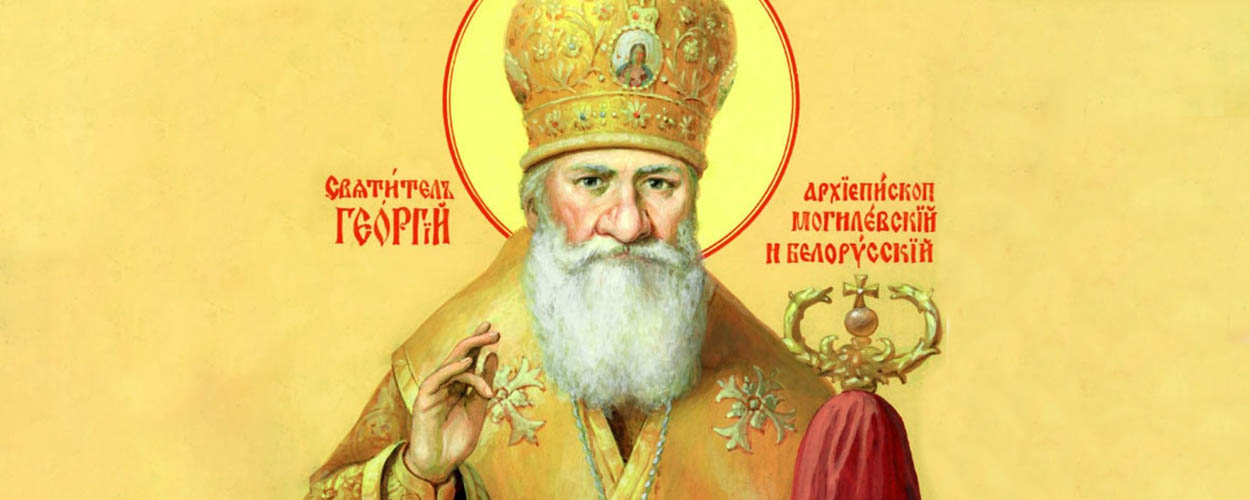
Archbishop of Mogilev Georgiy Konissky (1717 - 1795) was an outstanding church leader, teacher, writer and preacher, who found glory in God and honour among descendants. The genius Russian poet Pushkin admired his literary talent. He dedicated his life to reassuring his fellow Christians facing strong pressure to become Catholics or Uniats in the Commonwealth of Poland and Lithuania. After Belarus joined Russia, he spared no effort to help the Uniats return to Orthodoxy.
When he began his service in Belarus, it had only one remaining Orthodox diocese, with the centre in Mogilev. The authorities were making plans to close it. His acceptance of his ordination as bishop of Mogilev, and subsequently the archbishop of Belarus, was an act of self-sacrifice.
From the first days of his service, he dedicated himself to the education and enlightenment of his fellow believers. He established a religious seminary with departments of theology, philosophy, Hebrew and Greek. He also opened a printing house to print copies of the Catechism to be distributed among the parishes. He instructed the parish priests to use this book to educate the laity on the foundations of the Orthodox faith.
Saint Georgiy reposed on 13 February 1795. His contemporaries commented on his life and service: "... Without the wisdom and leadership of this learned man, hardly a trace of true Orthodoxy would have remained in this land...".
Throughout history, Christian martyrs have given their lives for Christ, inspiring others with their courage and unwavering faith.
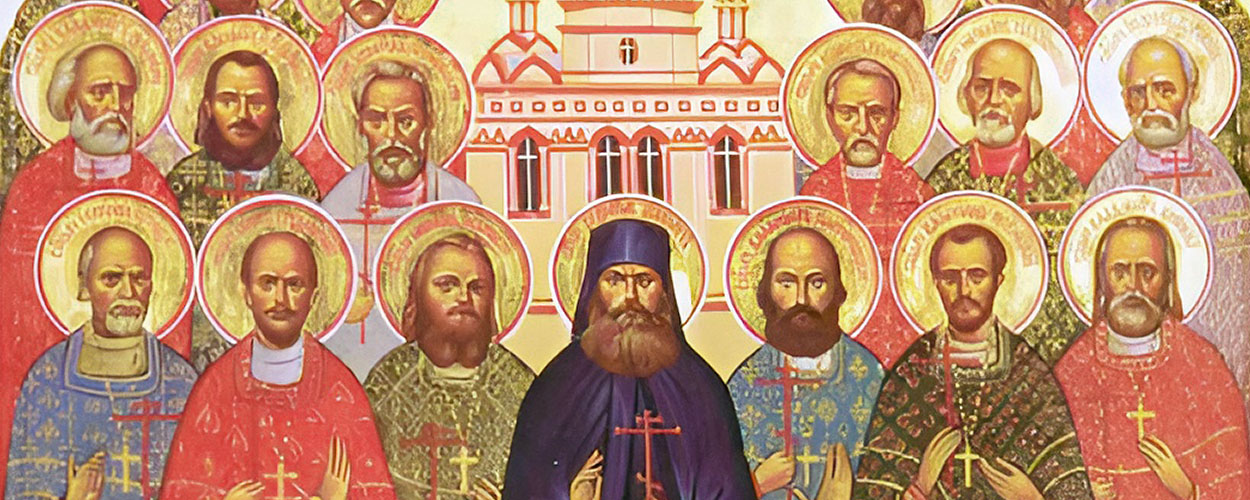
Anthony, John, and Eustathius of Vilnius suffered for Christ during the reign of the Lithuanian Great Prince Algirdas (1345-1377). His wife, a Christian, died in 1346, and Algirdas supported the fire-worshipping priests, who urged the persecution of Christians. The saints John and Anthony had no intention of flaunting their Christianity, but they did not observe pagan customs either.
On a fast day, the prince interrogated the brothers and ordered them to eat meat. When they refused, he threw them into prison, but that did not stop them from preaching. Many believed in Christ. The prison became like a Christian school. Krulis, a relative of the two brothers was a favourite of Algirdas. He could look forward to a brilliant career and future at the royal court. He converted to Christ, however, and also publicly declared that he was a Christian, and since it was the Nativity Fast, he would not eat meat.
After their deaths, the pagan priests hoped the preaching of Christianity would end, but the opposite happened. Their relics were found to be incorrupt. Vilnius monastery of the Holy Trinity, where the holy relics are kept, became a stronghold of Orthodoxy.
The venerable martyr Makarii Kanevsky was born in 1605 into a pious Orthodox family. At age 9, he entered the Kupyatitsky monastery of Pinsk and gained fame as an ascetic and righteous man. He was appointed hegumen of the Kamenets Resurrection Monastery near Grodno at the age of 32, then hegumen of Pinsk's Kupyatitsky Monastery for two years, and hegumen of the Monastery of the Assumption in his hometown Ovruch.
As a monk, he demonstrated fearlessness, unwavering faith, and devotion to Christ. During his lifetime, Orthodox Christians in present-day Belarus and Ukraine were persecuted by Catholics and Uniates under the Polish-Lithuanian Commonwealth. During the attack on the monastery in 1671, the Uniates urged St. Makarii to convert to Uniatism, and when he refused, they ransacked the monastery and drove out all the monks. The Kiev Caves Lavra was his refuge before he was appointed abbot of Kanev monastery. The poor, needy, sick and grieving came there to receive reassurance, spiritual advice, and healing.
Turks and Tatars attacked Kanev and broke into the monastery on September 4, 1678, demanding its gold and possessions. The saint was beaten mercilessly. "My treasure is in Heaven, not on earth," the holy elder replied. On 7 September 1678, monk Makarii accepted the martyr's crown after two days of cruel torture.
Holy Martyr Makary of Kiev (+ 1497) was renowned for his ascetic life, exemplary piety, steadfast devotion to Orthodoxy, and diligent performance of his duties. In the Trinity monastery of Vilnius, he worked tirelessly to strengthen discipline among the monks and uphold piety among the laity. The Council of Orthodox Bishops of the Grand Duchy of Lithuania elected him as metropolitan of Kiev and all Rus' in 1494.
In 1497, he travelled to his cathedra in Kiev, then under attack from the Tartars. On 1 May 1497, the Tartars attacked him and his party outside Mozyr, halfway to the city. His incorrupt relics were placed in Kiev's church of Saint Sophia. Multiple miracles connected with his relics have been recorded. Several times, the altar candles erupted in flames, and his tomb appeared to emit light.
Our Orthodox Christian faith teaches us the most amazing lesson with the lives of these sainted rulers. They resisted the world's temptations and emulated the Saints in ruling according to Divine commandments. Many loved God so much that they became monastics, giving up their power and privilege for the simplicity, poverty, and humility of angelic living. Their examples call into question our often materialistic, passion-driven lives.
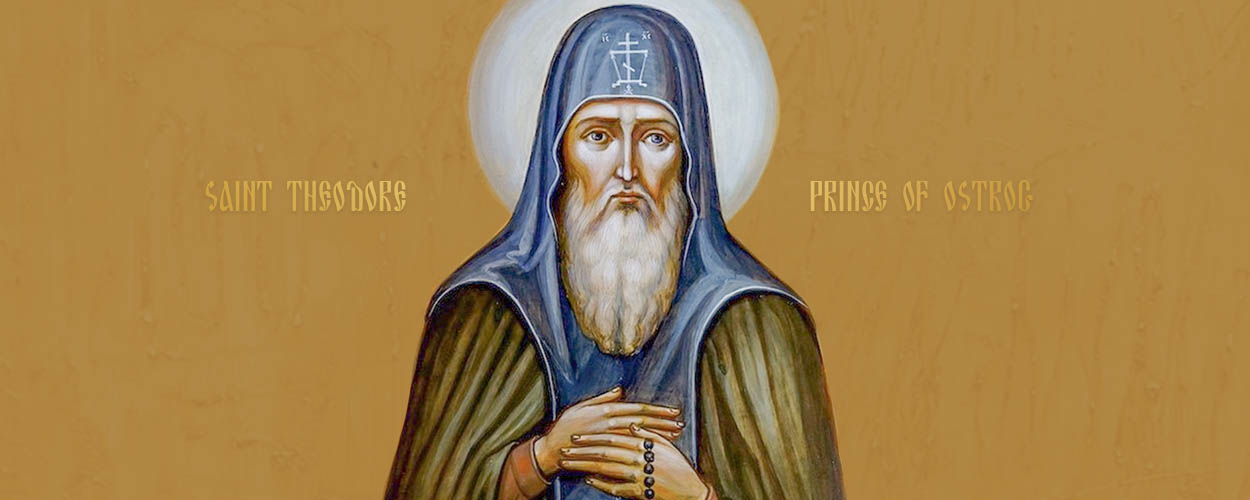
A notable achievement of Saint Theodore, Prince of Ostrog (1360—1446), was the construction of churches and the defence of Orthodoxy against the encroachment of Papism in Volhynia. He acquired military glory, great riches, and vast lands, and used all these for the defence of Orthodoxy. At the peak of his might, in 1441, he abandoned his estate and possessions to join the Kiev Caves monastery. From that point on, until the time of his repose, he waged a struggle for the salvation of his soul. Around 1638, his relics were discovered incorrupt and he was glorified.
The Great Prince of Kiev and Smolensk, Saint Rostislav-Michael (1107 - 1167), was an outstanding civil and religious figure of his age. He takes the credit for the construction of Smolensk's cities and villages, and the embellishment of churches, and monasteries. He founded the cities of Rostislavl, Mstislavl, Krichev, and Slavgorod among others.
Smolensk's increased in Russia was due to his work and efforts. Among the qualities that distinguished Saint Rostislav was his deep regard for the Church and its hierarchy, his sense of fairness, his obedience to elders, as well as his profound political wisdom. He was the keeper of the "Russkaya Pravda", the "Russian Truth", as well as of Russian propriety for several generations.
These women saints are a shining example of what it means to lay their complete trust in Christ and find reassurance in Him. They show us that He is always there for us, no matter what we are facing.
The Righteous Sophia of Slutsk was born in 1586. She lost her father and mother at a young age and grew up in the care of her unloving guardians. Yet she found solace and reassurance in the Orthodox faith. She married Janusz Radziwil, a Catholic nobleman, but remained Orthodox and insisted that her children be brought up in Orthodoxy.
She gave all the love and generosity of her heart to Christ. She gave financial support and reassurance to the Orthodox clergy and the laity of the Orthodox brotherhood of the Holy Transfiguration donated generously towards the building of churches and went on pilgrimages to the most remote parishes. Princess Sofia persuaded her husband to ask the Polish king for an edict against compelling the Orthodox to become Uniats. The king listened, and Slutsk remained a stronghold of Orthodoxy in Belarus.
The Righteous Sophia died in childbirth in 1612 at the age of 26. Her incorrupt relics are kept at the Cathedral of the Holy Spirit in Minsk, as a reminder of her Christian feat.
The Blessed Righteous Virgin Juliana (1534 – 1560) was the daughter of Prince Jury Olshansky. Saint Juliania lived a short life and attained sainthood - but not as a martyr or a renowned ascetic. She won eternal glory with her obedience, chastity and observance of the commandments, her love of God and the neighbour and her participation in church life.
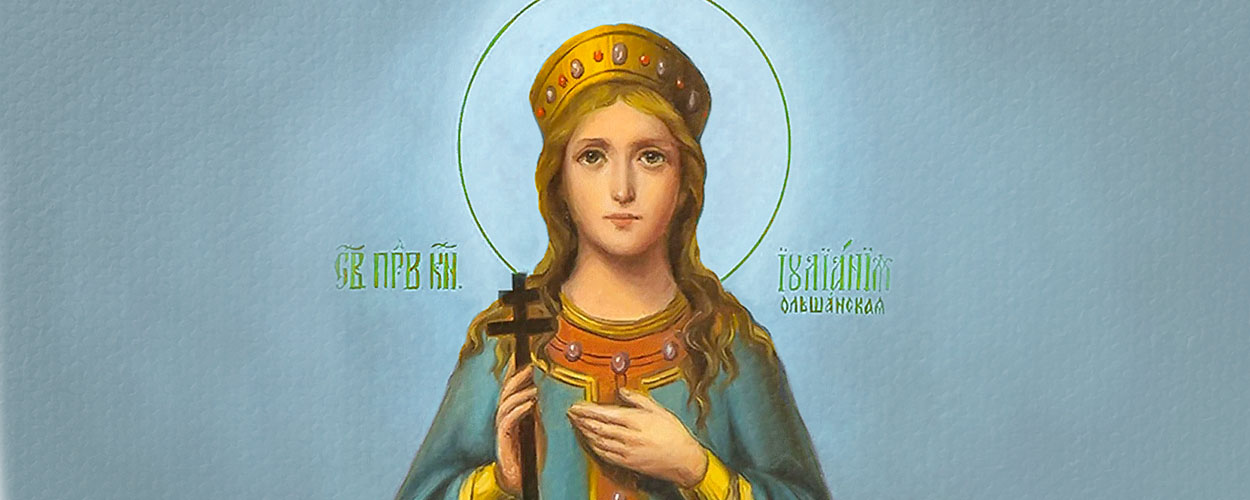
By the will of God, she became a saint and began to work miracles after her death. Her incorrupt relics were placed in the Kiev Caves Lavra. Like the other saints, she participates in our lives, praying tirelessly to God that He might help us grow in our faith and purity, and that He may keep His love abundant in our hearts. People with mental illness turn to her in prayers for the relief of their condition.
The Blessed Valentina of Minsk (Valentina Sulkovskaya) was born into the family of a priest family in 1888. She got married a short time before the First World War. In 1931, her husband was arrested by the Bolsheviks and sent to a camp, where he lost his life.
The loss of her parents, her husband, and many relatives, brought her great suffering. She spent the last three decades of her life bedridden from a chronic disease. Yet these tragedies did not bring her into despair. Her faith in God gave her the strength to live, showing everyone how God's power could be manifest in one's weakness.
On 6 February 1966, she took Holy Communion and reposed in the Lord. During his lifetime she used to say: "After I die, keep coming to me as if I were alive, and I will help you." She is remembered for her exceptional kindness and compassion and her gift of ceaseless prayer for others.
Commemoration of the Synaxis of Belarusian saints is an occasion to recall the words of our Lord Jesus Christ that the Kingdom of God is close. The saints from our land have found their way there, and many lived in our time and age. May this knowledge strengthen us in our resolve to live by the Gospel, be good servants of God and our neighbour and follow the examples of our sainted countrymen.